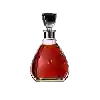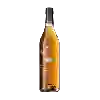
Domaine Vial MagnèresRimage Banyuls
This wine generally goes well with beef and mature and hard cheese.
Food and wine pairings with Rimage Banyuls
Pairings that work perfectly with Rimage Banyuls
Original food and wine pairings with Rimage Banyuls
The Rimage Banyuls of Domaine Vial Magnères matches generally quite well with dishes of beef or mature and hard cheese such as recipes of homemade italian lasagna or ground steak in a seed coat.
Details and technical informations about Domaine Vial Magnères's Rimage Banyuls.
Discover the grape variety: Blush seedless
Obtained in the United States by Professor Harold P. Olmo of the University of Davis (California) by crossing Emperor with Z4-87, the latter already being a cross of (Alphonse Lavallée x 75 Pirovano or Sultana moscata) with the Queen of the Vines.
Last vintages of this wine
The best vintages of Rimage Banyuls from Domaine Vial Magnères are 2015, 2008, 2016, 2010
Informations about the Domaine Vial Magnères
The Domaine Vial Magnères is one of of the world's greatest estates. It offers 18 wines for sale in the of Banyuls to come and discover on site or to buy online.
The wine region of Banyuls
Banyuls wines come from the South-eastern Part of Roussillon, in the south of France, in the lower Pyrenees, a few kilometres from the Spanish border. These naturally Sweet wines are consumed both as an aperitif and as a dessert. They come in a wide range of hues, from GoldenGreen (Banyuls Blanc) to Amber (Banyuls Ambré) to the intense garnet of the standard Banyuls Rouge. Unusually among the natural sweet wines of France, all Banyuls wines are made primarily from Grenache grapes of various colors.
The wine region of Languedoc-Roussillon
Languedoc (formerly Coteaux du Languedoc) is a key appellation used in the Languedoc-Roussillon wine region of southern France. It covers Dry table wines of all three colors (red, white and rosé) from the entire region, but leaves Sweet and Sparkling wines to other more specialized appellations. About 75% of all Languedoc wines are red, with the remaining 25% split roughly down the middle between whites and rosés. The appellation covers most of the Languedoc region and almost a third of all the vineyards in France.
The word of the wine: Musky
Said of an odor reminiscent of musk.














